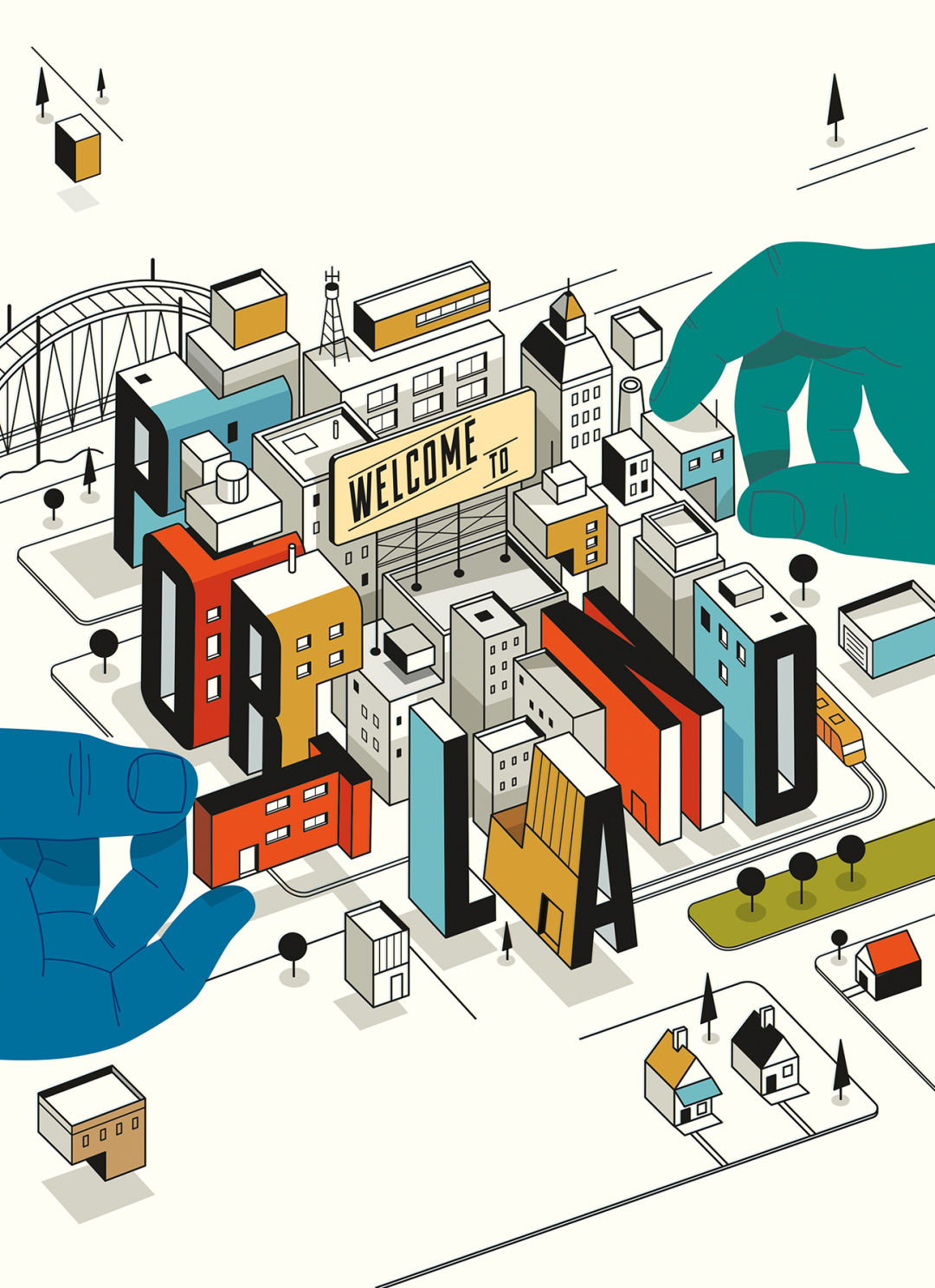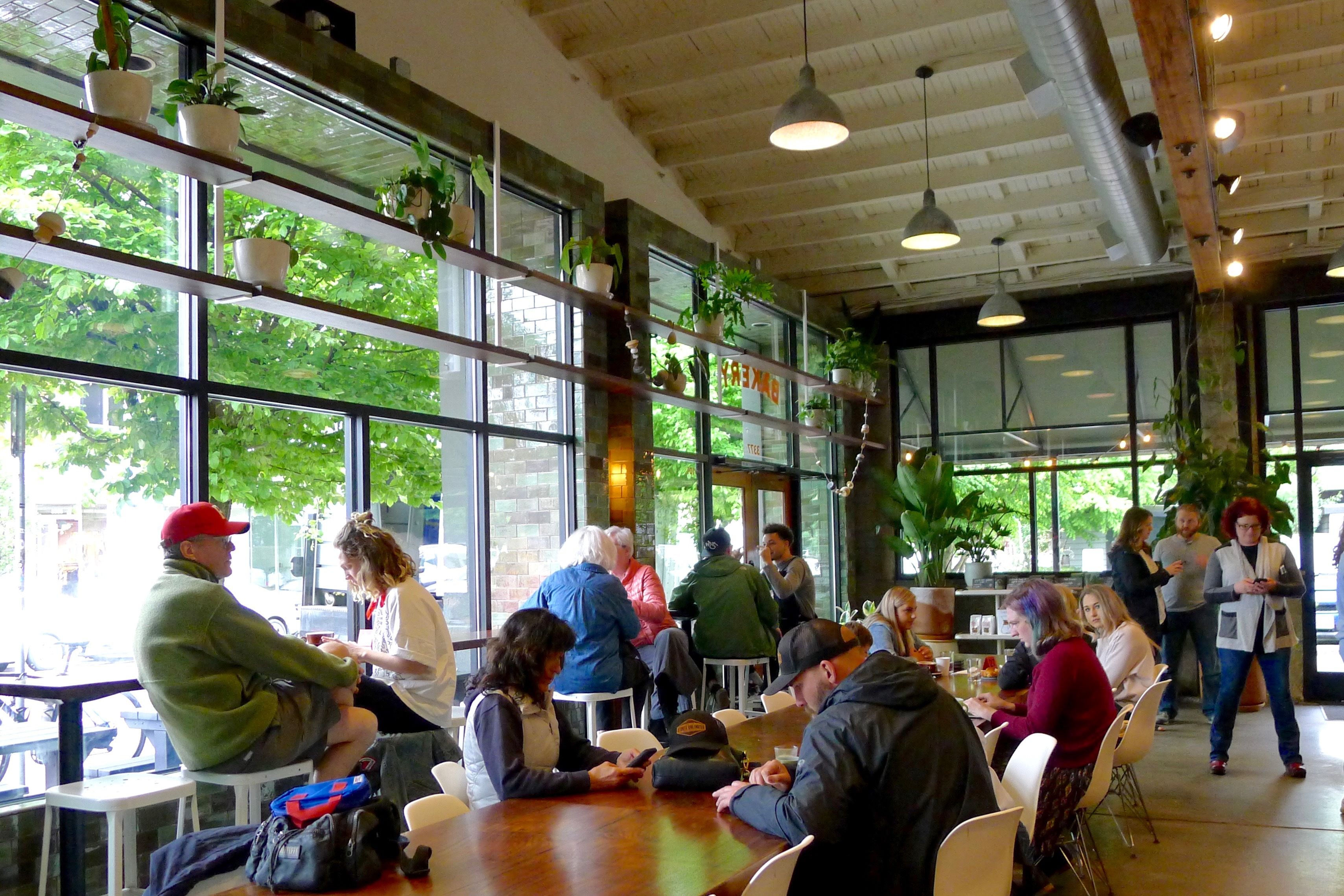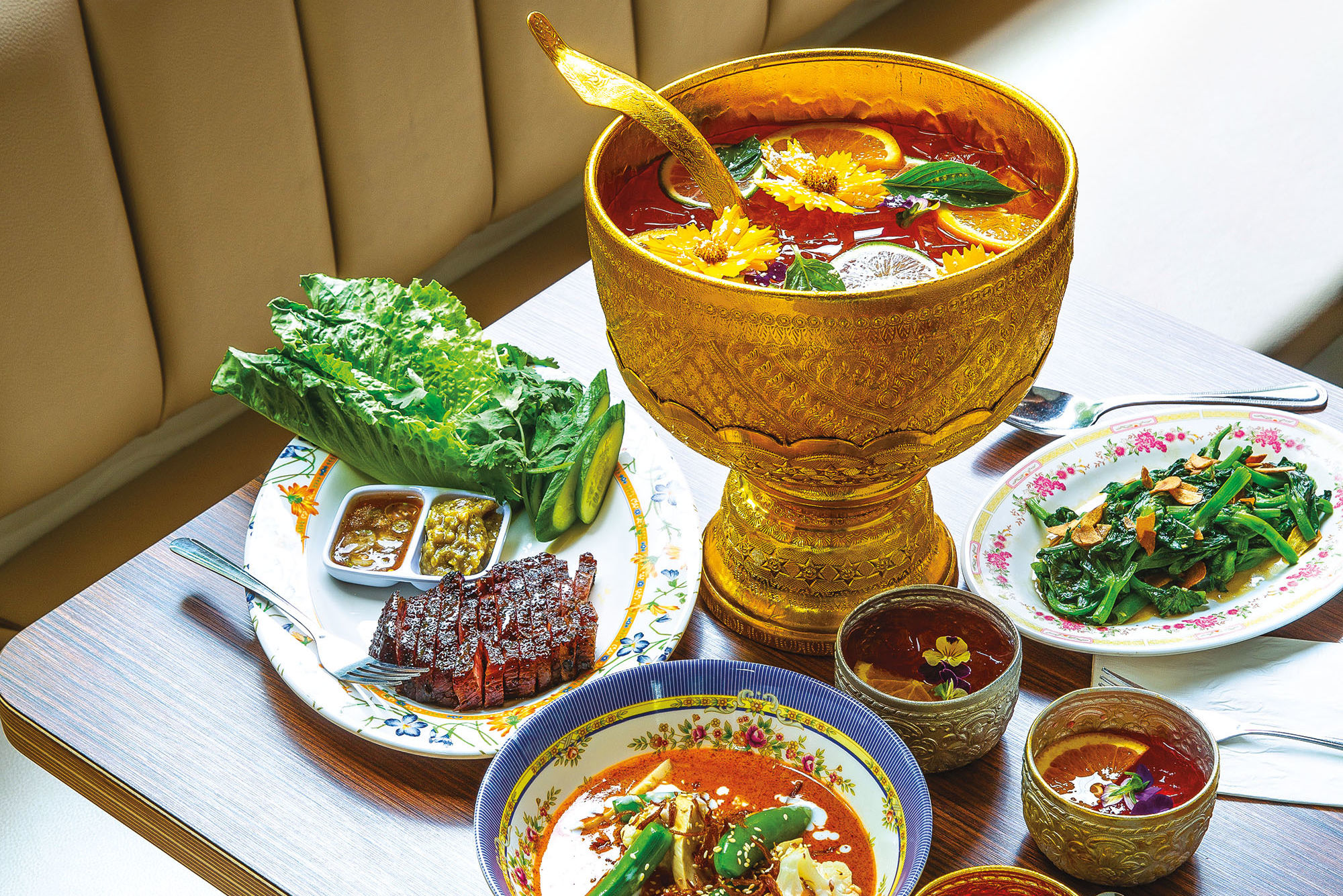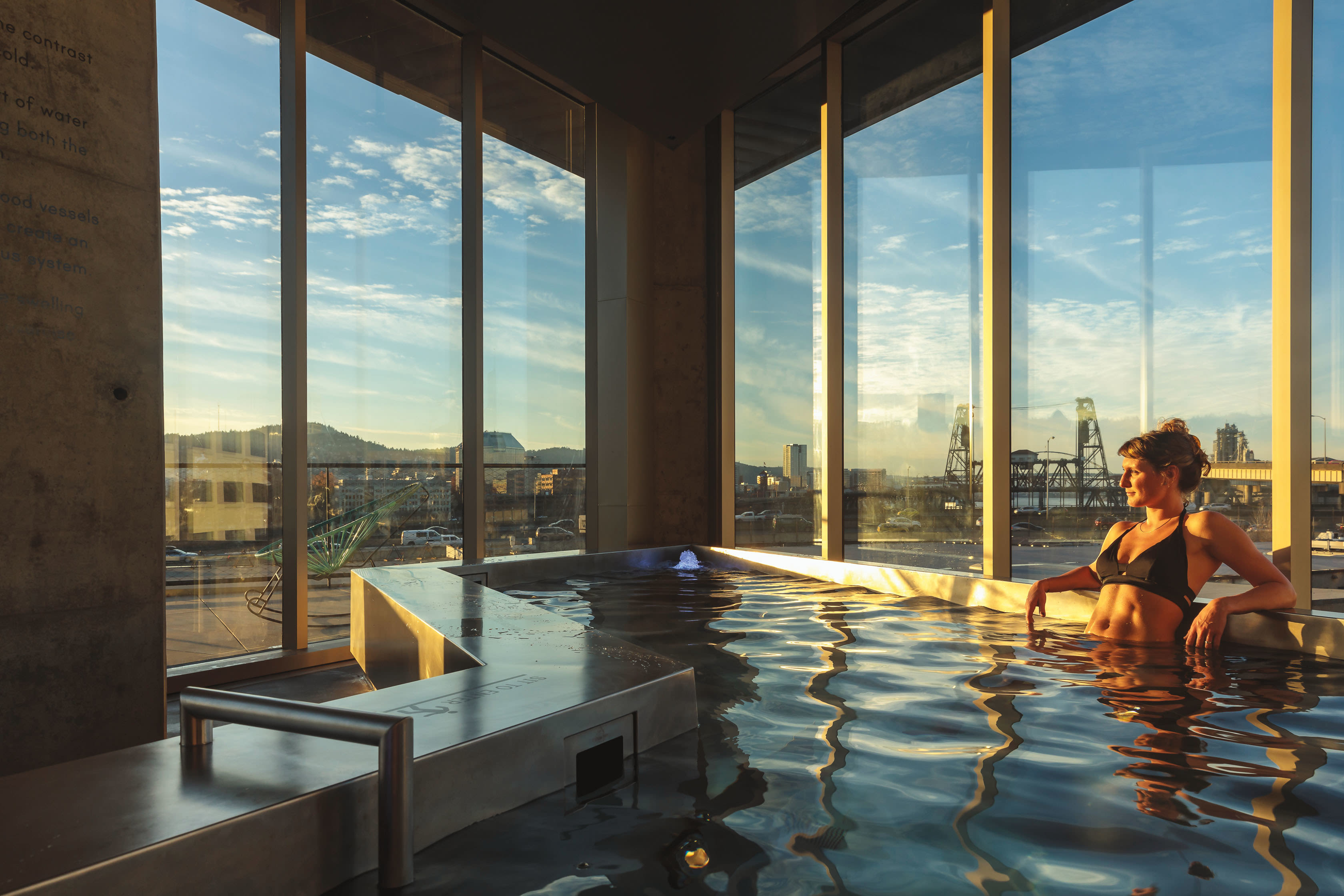Rose City Rebrand: Translating the Story of a City at a Crossroads to Tourists

Image: Harry Campbell
If you happened to be hiking through Washington Park one foggy day last January, you might have stumbled upon a curious tableau: Stumptown Coffee guru Duane Sorenson, in a black beanie and puffy coat, pouring a steaming cup made from Guatemalan-sourced beans for Matty Matheson, the foul-mouthed, tattooed and mulleted, king-of-munchies Canadian chef who shot to fame making jaw-breaking cheeseburgers on camera for Vice.
Matheson—who parlayed those cheeseburgers into a New York Times best-selling cookbook and now boasts a combined Instagram and YouTube follower count of nearly 2 million—was in town with his comedy podcast cohost, Alex 2Tone. The two got geared up at Portland Outdoor Store, hiked over to Forest Park, dined at Eem, and soaked at Knot Springs.
Their trip was a deliberately curated version of Portland, and Matheson’s followers ate it up. It came courtesy of Travel Portland, the nonprofit marketing agency charged with making the city cool (again) in the eyes of the rest of the world, after two years of upheaval—pandemic to protests—fundamentally shifted the city’s long-standing “put a bird on it”–driven tourism narrative.
Most Portlanders don’t see the work that the agency does. We’re not the target market. But it is unknotting a thorny problem daily: how to rebrand Portland for the honeymooners, the conventioneers, the business travelers, the families on vacation, and everyone in between, and restore the thousands of jobs, plentiful tax dollars, and swagger that come with being a tourist destination.
Matheson is an influencer, but Travel Portland’s campaign doesn’t stop with extremely online celebrities. For the past few months, a certain slice of the population in major West Coast metro areas—LA, San Francisco, Seattle—have been fed a steady diet of images and videos about Portland via their Instagram and Facebook feeds, when booking tickets on Expedia, or when clicking on Vox explainers.
Think waterfall mist, a tight shot of damp moss dialed in for maximum attraction for drought-saturated Californians, a slurp of Afuri ramen, a close-up of a receipt carrying zero sales tax. And then the tagline: This Is Portland.
If that last bit sounds familiar, you may have followed the mini-imbroglio in summer 2021, when Travel Portland placed a full-page ad entitled “This Is Portland” in the New York Times and other major dailies, trying to explain the city’s current crossroads to the world at large.
“Some of what you’ve heard about Portland is true,” the ad read, in part. “Some is not. We have some of the loudest voices on the West Coast. And yes, passion pushes the volume all the way up.”
Whether you liked it or not—and plenty of locals most acerbically did not—the “This Is Portland” ads, plus an accompanying video that was heavier on people of color than the city’s demographics would immediately suggest, got the town talking.
What it didn’t do, at least not yet, and particularly not given the double whammy of the delta and omicron variants, is restore Portland’s hospitality industry to where it was prepandemic. For a local, that can seem like no big deal—who needs tourists, anyway? We’ve got plenty enough that needs fixing, without worrying about catering to that particular demographic.
But prepandemic, not only did nearly 37,000 Portland-area residents depend on jobs in hospitality for a living, taxes on hotels and tourists generated more than $278 million annually for regional and state budgets. In 2021, tourist tax revenue was just $193 million, and there were just 27,100 people working in the industry. (The hotel boom of the late 2010s is adding many new rooms to the city’s inventory at exactly the wrong time.)
There was a time when everyone wanted to walk in Fred and Carrie’s footsteps. Back then, when Travel Portland ran its ad campaigns (which are funded by a 2 percent lodging tax tacked on to overnight stays at hotels and Airbnbs), they were targeted toward the slower, rainier winter months.
The cadence is different now, says Ajay Date, the agency’s vice president of marketing. Now it’s a steady year-round effort, not as splashy, but more quietly urgent.
Getting the tone right is delicate, says industry insider Andy Lindblade, director of strategy at Wieden & Kennedy, Portland’s best-known ad agency, which isn’t involved in this particular campaign. It’s not the responsibility of the tourism agency to grapple with the politics of houselessness or police reform, he says, but they do have to ensure that they’re truthful in their portrayal of a city in the midst of a clarifying identity crisis.
But to speak to travelers with disposable income and plenty of choices about where to spend it, “I wouldn’t go near all the negative stuff,” Lindblade advises. “I would just talk about the deep, passionate optimism that Portland has about anything and everything.”
To accomplish that, Travel Portland tapped a Portland-based agency called Industry, which more typically works with multinational companies. They’re the ones who came up with the original “This Is Portland” ads, as well as the Matheson visit and the current “Feel The ...” campaign.
“I could have gone off and done an animation about like this beautiful Portland thing,” says Oved Valadez, cofounder and executive creative director of Industry. “Or I can give a platform to these businesses [run by people] of color, to these new thought leaders and these new elements as we’re starting to see Portland rise from the ashes.”
The original “This Is Portland” campaign, particularly the royal we in the line, “We’re a place of dualities but never polarities,” came in for pointed criticism. “We is not ‘we’ if it is the voice of only one subsection of this place, not the rest of us,” mused journalist Leah Sottile via her popular Substack, where she often writes about extremism and the American West. “Portland needs to make sure everyone has a seat at our table first, before we invite the world over to eat.”
Valadez says he heard plenty of the criticism, often from his own friends and those he knows in the protest movement. He sticks by the strategy, pointing out that with the creative freedom given to Industry, they could have fallen back on the rhododendron factor on which Portland has coasted for so long. They’ve opted instead, he says, to spotlight those who wouldn’t have gotten that shine in the past, but who are, in his view, at the center of where Portland’s headed. Yes, there’s been turmoil here, Valadez says, and all the better, in his view; it’s given Portland a chance to reset, he says, and be something truer than it was before.
So Bertony Faustin, a well-known Black winemaker, makes an appearance in the current round of ads running on the West Coast. So does chef Anthony Brown of Cajun-Mexican-influenced burger joint Nacheaux (tagline: “Feel the Flavor”) and a Black family browsing the stacks at Southeast bookshop Mother Foucault’s (“Feel the Plot”).
More visits from influencers like Matheson are in the works, Valadez says. He imagines mountain bikers coming to demo our trails or more chefs going on tasting tours to show off wherever Portland is going next.
“We won’t just be sharing people of color to purpose-wash. I want to own that,” Valadez says. “I want to show the true movers and shakers. There’s all these really fascinating little pockets and it just happens to be that those people that are changing the game are people of color, people that haven’t had voices.”




